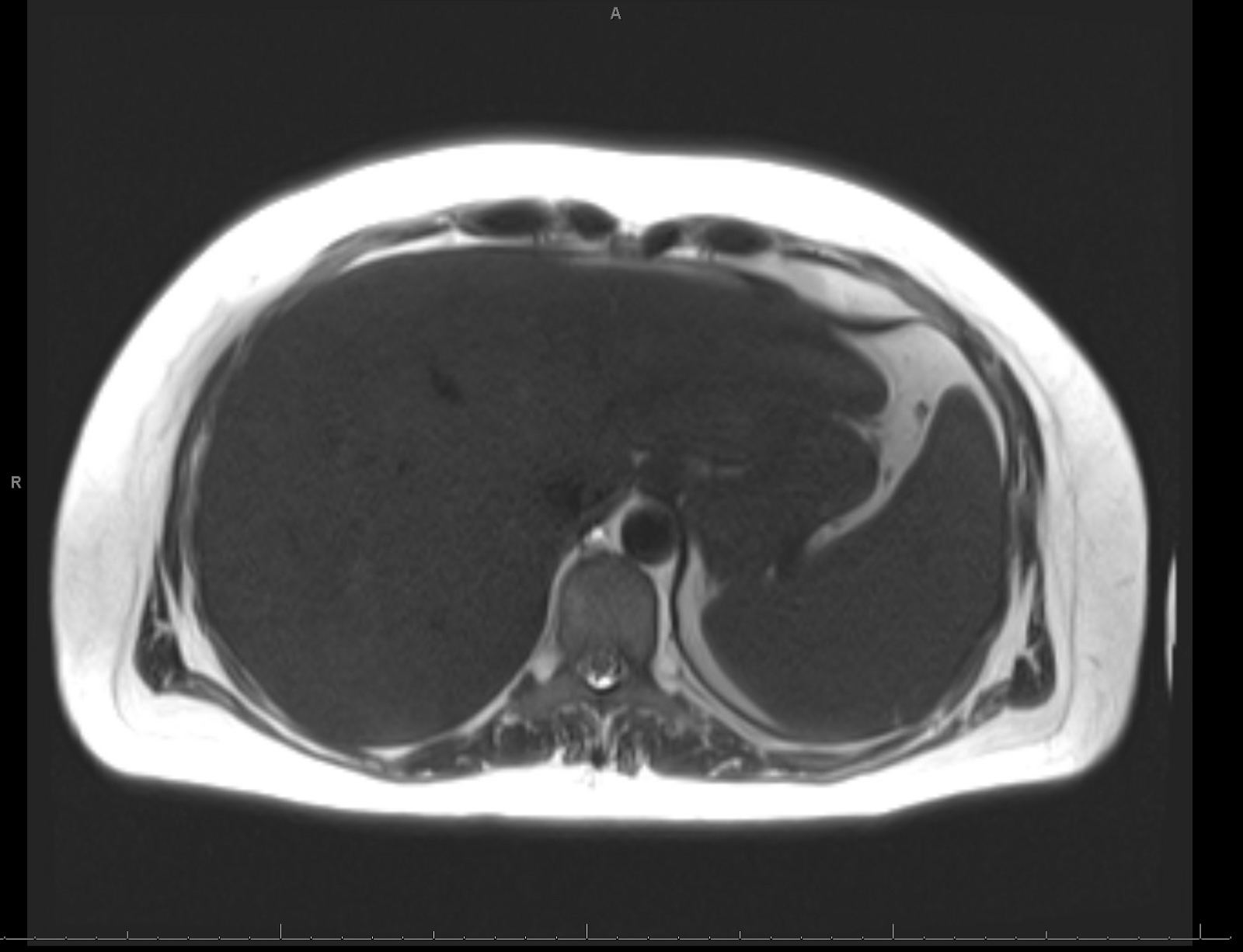Sunday Poster Session
Category: Infections and Microbiome
P1326 - Unveiling Brucellosis: A Rare Case of Liver Involvement After Dairy Exposure
Sunday, October 26, 2025
3:30 PM - 7:00 PM PDT
Location: Exhibit Hall
- HM
Hari Movva, MD
University of Texas Medical Branch
Galveston, TX
Presenting Author(s)
Hari Movva, MD, Reema Patel, MD, Shiv R. Patel, MD, Rebecca C. Sullivan, MD
University of Texas Medical Branch, Galveston, TX
Introduction: Brucellosis is a zoonotic infection caused by Brucella species, commonly transmitted through consumption of unpasteurized dairy products or direct contact with infected animals. While brucellosis primarily affects the musculoskeletal system, it can also involve the the liver, causing hepatomegaly, abscesses, and focal lesions. Hepatic abnormalities in brucellosis can present as nonspecific elevated liver enzymes, making early recognition challenging. This case highlights the diagnosis and management of a patient with brucellosis-induced hepatic involvement, emphasizing the need to consider brucellosis in differential diagnoses, particularly in endemic areas or with relevant exposure history.
Case Description/
Methods: A 40-year-old female with no significant medical history presented with symptoms that began three months ago, including lower back and bilateral leg pain, bone pain, nausea, appetite changes, fatigue, and an 11 kg weight loss. She also reported undulating fevers and a history of consuming unpasteurized cheese within 4 weeks of symptom onset. Physical examination was unremarkable. Laboratory findings revealed mild hepatic enzyme elevations with AST: 79, ALT: 40, and ALK Phos: 197. Viral hepatitis panel was negative. CT of the abdomen and pelvis with contrast showed hepatosplenomegaly and a 1 cm hypodense lesion in the right hepatic lobe with concerns for possible infectious or inflammatory etiology. Brucellosis was suspected due to her clinical presentation and dairy product consumption. Cultures later grew Brucella melitensis, confirming the diagnosis of brucellosis. She was started on doxycycline and rifampin with improvement in both her clinical symptoms and liver function tests. Interestingly, the 1 cm hypodense hepatic lesion seen on previous CT was no longer visualized on follow-up MRI.
Discussion: This case highlights important aspects of brucellosis diagnosis and management. While musculoskeletal involvement is the hallmark of brucellosis, hepatic abnormalities should not be overlooked, especially in endemic regions or patients with relevant exposure history. The nonspecific symptoms of brucellosis, such as fever and fatigue, combined with mild liver enzyme abnormalities, may lead to misdiagnosis if brucellosis is not considered early in the diagnostic process. Clinicians should maintain a high index of suspicion for brucellosis in patients presenting with systemic symptoms, showing that a timely diagnosis and treatment are critical for favorable outcomes in brucellosis.

Figure: Figure 1: Axial MRI of patient showing hepatosplenomegaly.
Disclosures:
Hari Movva indicated no relevant financial relationships.
Reema Patel indicated no relevant financial relationships.
Shiv Patel indicated no relevant financial relationships.
Rebecca Sullivan indicated no relevant financial relationships.
Hari Movva, MD, Reema Patel, MD, Shiv R. Patel, MD, Rebecca C. Sullivan, MD. P1326 - Unveiling Brucellosis: A Rare Case of Liver Involvement After Dairy Exposure, ACG 2025 Annual Scientific Meeting Abstracts. Phoenix, AZ: American College of Gastroenterology.
University of Texas Medical Branch, Galveston, TX
Introduction: Brucellosis is a zoonotic infection caused by Brucella species, commonly transmitted through consumption of unpasteurized dairy products or direct contact with infected animals. While brucellosis primarily affects the musculoskeletal system, it can also involve the the liver, causing hepatomegaly, abscesses, and focal lesions. Hepatic abnormalities in brucellosis can present as nonspecific elevated liver enzymes, making early recognition challenging. This case highlights the diagnosis and management of a patient with brucellosis-induced hepatic involvement, emphasizing the need to consider brucellosis in differential diagnoses, particularly in endemic areas or with relevant exposure history.
Case Description/
Methods: A 40-year-old female with no significant medical history presented with symptoms that began three months ago, including lower back and bilateral leg pain, bone pain, nausea, appetite changes, fatigue, and an 11 kg weight loss. She also reported undulating fevers and a history of consuming unpasteurized cheese within 4 weeks of symptom onset. Physical examination was unremarkable. Laboratory findings revealed mild hepatic enzyme elevations with AST: 79, ALT: 40, and ALK Phos: 197. Viral hepatitis panel was negative. CT of the abdomen and pelvis with contrast showed hepatosplenomegaly and a 1 cm hypodense lesion in the right hepatic lobe with concerns for possible infectious or inflammatory etiology. Brucellosis was suspected due to her clinical presentation and dairy product consumption. Cultures later grew Brucella melitensis, confirming the diagnosis of brucellosis. She was started on doxycycline and rifampin with improvement in both her clinical symptoms and liver function tests. Interestingly, the 1 cm hypodense hepatic lesion seen on previous CT was no longer visualized on follow-up MRI.
Discussion: This case highlights important aspects of brucellosis diagnosis and management. While musculoskeletal involvement is the hallmark of brucellosis, hepatic abnormalities should not be overlooked, especially in endemic regions or patients with relevant exposure history. The nonspecific symptoms of brucellosis, such as fever and fatigue, combined with mild liver enzyme abnormalities, may lead to misdiagnosis if brucellosis is not considered early in the diagnostic process. Clinicians should maintain a high index of suspicion for brucellosis in patients presenting with systemic symptoms, showing that a timely diagnosis and treatment are critical for favorable outcomes in brucellosis.

Figure: Figure 1: Axial MRI of patient showing hepatosplenomegaly.
Disclosures:
Hari Movva indicated no relevant financial relationships.
Reema Patel indicated no relevant financial relationships.
Shiv Patel indicated no relevant financial relationships.
Rebecca Sullivan indicated no relevant financial relationships.
Hari Movva, MD, Reema Patel, MD, Shiv R. Patel, MD, Rebecca C. Sullivan, MD. P1326 - Unveiling Brucellosis: A Rare Case of Liver Involvement After Dairy Exposure, ACG 2025 Annual Scientific Meeting Abstracts. Phoenix, AZ: American College of Gastroenterology.
